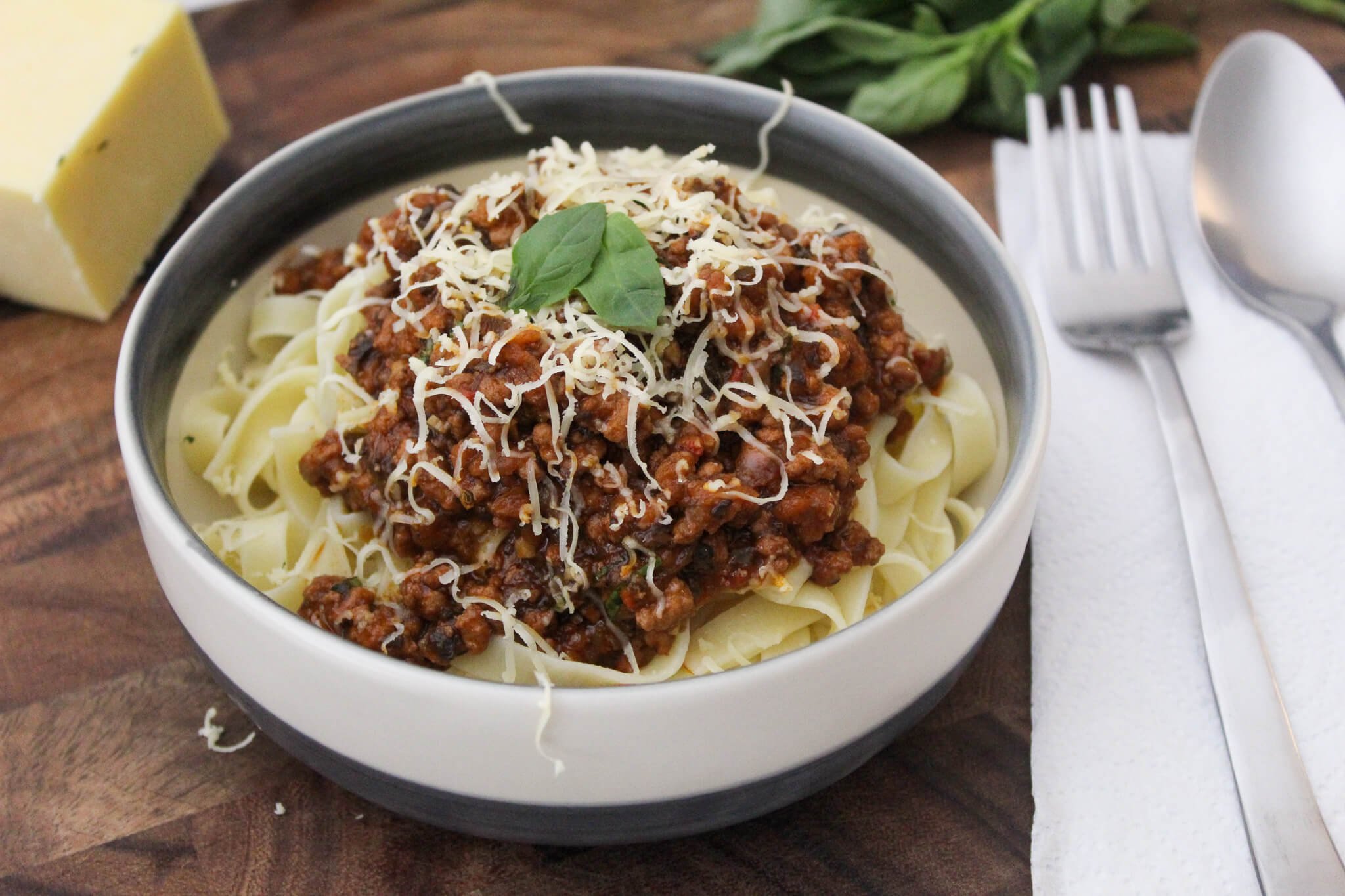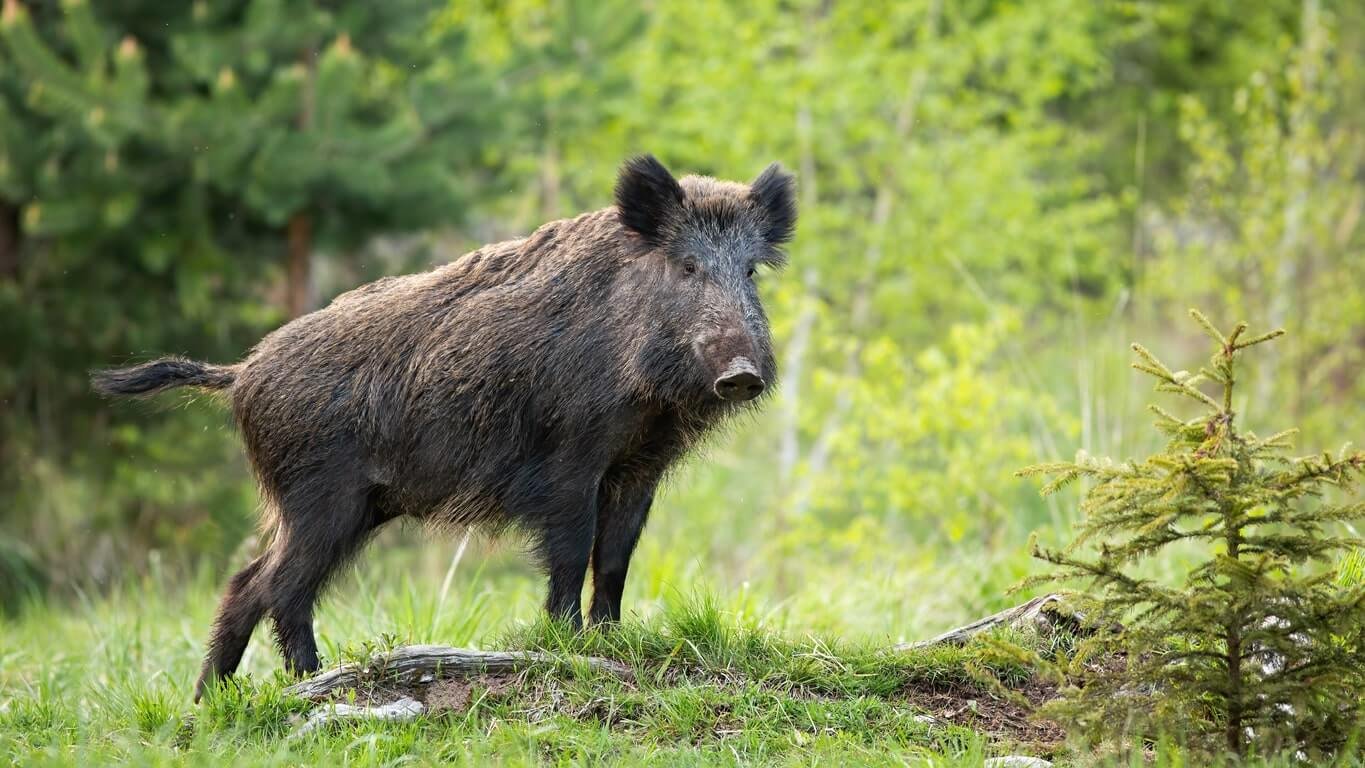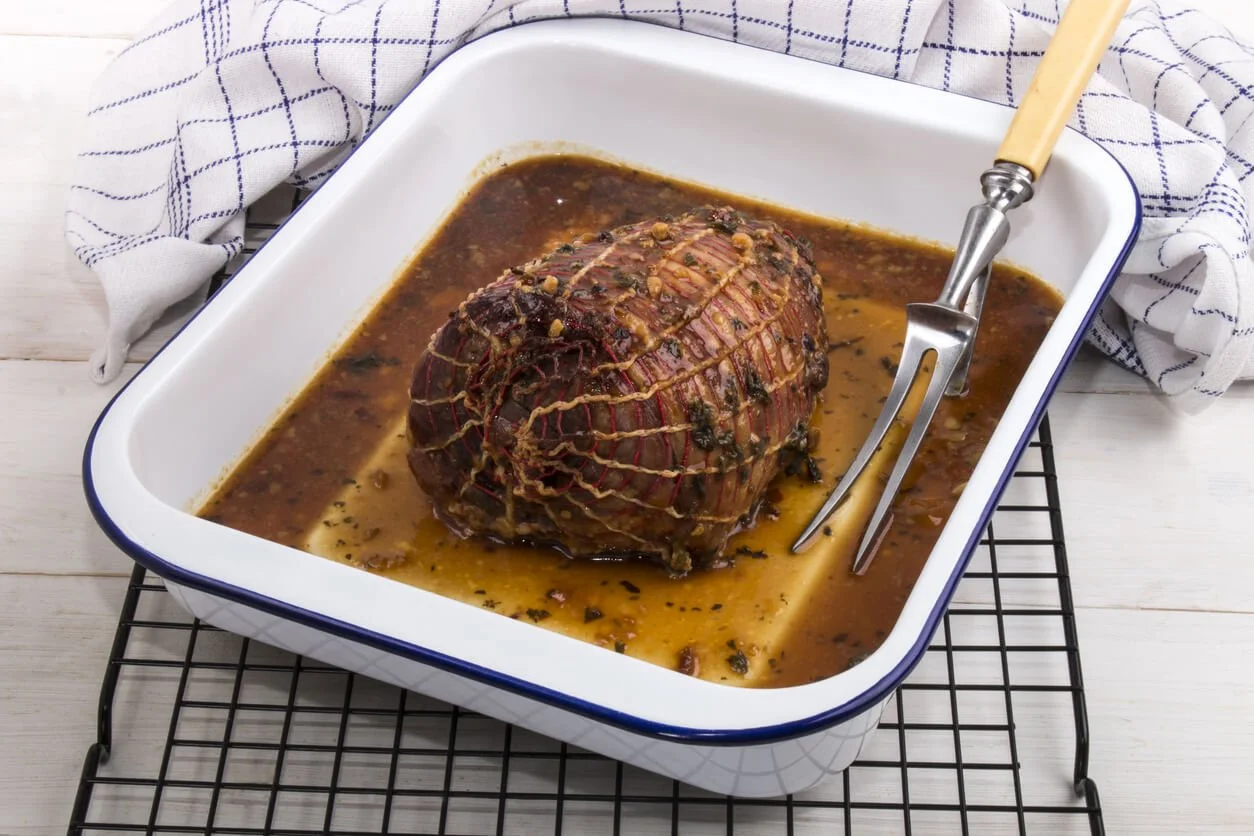Wild Boar Ragù Sauce Recipe
Discover > Texas Recipes > Wild Boar Ragù Sauce Recipe
Wild boars are tough, aggressive, feral pigs that were one of the biggest nuisances to America since the beginning of agriculture, all the way through to today. They're one of the oldest game preys for humans and many different cultures had many different ways of hunting the invasive species (invasive because they're no native to America). Today boar meat is eaten relatively often in the south particularly by people that live on ranches and farms.
Wild Boar Taxonomy & Evolution
Wild boars are basically toughened domesticated pigs. Christopher Columbus exported boar from Spain in the 17th and 18th centuries, when the domesticated pigs were abandoned to fend for themselves, they quickly adapted and their population exploded.
Their hair grew much thicker to insulate more heat, their skin became much thicker and darker, they grew large, curved tusks, and developed super-tough snouts for burrowing and digging. Their huge heads and strong necks also assist with scavenging and can turn over large rocks that weigh upwards of 100 pounds. Since the feral hogs were introduced into their non-native new world, they have no natural predators which make their population very hard to control naturally.
Wild boars typically weigh between 75 and 250 pounds although when conditions are ideal, they can weigh twice as much. They can typically grow up to 3 feet tall (although taller is common) and around 5 feet in length. Their huge head makes up around 1/3 of their body weight and their tusks grow to around 7-18 inches. Some rare cases report wild boars with tusks longer than 20 inches.
How Sustainable is Wild Boar?
Hunting or buying then eating wild boar is incredibly good for the wildlife and farms in Texas. Predators in the wild in the south like cougars, prefer to go for easier prey like deer, elk, raccoons, or rabbits. Feral hogs are very aggressive and very tough and more often than not travel in a group, which is a risky challenge for a line predator who relies on not being injured to survive.
Wild Boar in Texas
Being one of the most despised pests in texas, it's not a surprise that they're one of the most popular game animals in the south. Most of the wild boar population in the US is in Texas where they cause over $400,000,000 in damages every year by ruining recreational areas and damaging local wildlife. They've become such a nuisance that licensing laws have become very relaxed and the amount of feral pigs a person can shoot and kill is practically limitless.
Out of the 5 million feral pigs that live in the United States, 1.5 million live in texas spread out all across its 254 counties. They can thrive in almost any condition and their snouts and designed to be able to borrow up to three feet deep.
Crop & Garbage Raiding
To say that feral pigs eat everything is an understatement. Feeding dead (or perhaps live) corpses to pigs is a common theme throughout pop-culture and it's not an exaggeration. Because of this, the man-made buffet that is a home garden or a trash can is the perfect place for these pigs to find their meals. There have even been some cases of feral hogs eating pets and livestock.
Attacks on Humans
Hunters are most at risk for being attacked by a feral hog. Although 9 times out of 10 the pigs will run, if they get cornered, they attack. Between 1825 and 2012 there were 100 documented wild hog attacks in America, 4 of which were fatal, 3 of which were hunters killed by a boar they had wounded or shot.
How to Eat Wild Boar
Wild Boar Cuts
All cuts can be produced from the same 4 generic parts of the wild pig: the shoulder which has the blade roast, blade steak, shoulder roll, and picnic roast. The loin cuts the pork chops, (What wine goes well with pork chops?) rib roast, back ribs, tenderloin, sirloin cutlet, loin roast, and Canadian bacon (how long does bacon last?). The side from which the spareribs and bacon are harvested, and finally the leg where you'd find the leg roast, ham, and leg cutlets. Their trotters and select organs are edible and delicious too.
The Best Ways to Eat Boar
These are some of my favorite ways to prepare and eat wild boar. Wild boar has a lot of flavor and not much fat so low and slow is ideal for almost every cut of wild boar unless you're frying up a boar chop or steak as long as you use something to baste the meat. Here's a reference to some of the herbs, spices, and ingredients that pair well with wild boar:
Fruits: apple, plum, juniper berries (how long do juniper berries last?), redcurrant, cranberry
Herbs: fennel (how long does fennel last?), oregano, sage, rosemary, thyme, bay leaves
Spices: pepper, cumin, nutmeg (how long does nutmeg last?), chili, paprika, cloves (how long do cloves last?)
Alcohol: red wine, port, sherry, cider, beer
Get the best value for your money by purchasing pepper, cumin, nutmeg, chili, paprika, and cloves online!
Sausage
Sausages are the best way to pack as many flavors as possible and keeping them locked in a thin casing. Sausages can also be cut up and put into soups, stews, and gumbos, and they're most convenient to freeze for later.
Meat Sauces
Meat sauces are another great way to incorporate a lot of ingredients in a really simple and wholesome meal you can trick picky kids into eating.
BBQ
Marinading and grilling/barbecuing wild boar is one of the best ways because during that brining process the meat doesn't just absorb salt and other flavors, the acid in the marinade breaks down the muscle fibers and collagen for more tender meat.
Roasted
Making shredded wild boar is an amazing alternative to pulled pork and it can be roasted in the oven or smoked on the grill. remember the key to roasting wild boar a really good sear to lock in juices, a very low and slow cooking process, and constantly basting with something like stock, flavored butter, or wine.
Indulge in the flavors of Texas Wild Boar Sausage with this amazing recipe. Learn the unique ingredients, spices, and cooking techniques that make it extraordinary. Impress your guests by mastering this dish today!

Boar Ragù Sauce
Ingredients
- 2 lbs boar
- 3 carrots
- 4 stalks celery
- 2 white onions
- 3 cloves garlic
- 1 sprig rosemary
- 7 tbsp red wine
- salt to taste
- black pepper to taste
- 2 tbsp extra virgin olive oil
- ⅓ cup tomato paste
- thyme to taste
- sage to taste
- marjoram to taste
- 1 tbsp dark chocolate
- juniper berries to taste
- 4 cups vegetable broth
- 2 cups red wine
- 1 carrots
- 1 stalk celery
- White onions 1
- dround black pepper to taste
- 4 bay leaves
Instructions
- Chop the celery, carrot and onion
- Slice the boar and put it in a bowl
- Add the veggies and bay leaves, and cover with red wine
- Allow at least 12 hours and no more than 24 hours to marinate. This will help to tone down the intense gamey flavor
- When the marinating time is over, cut the meat into small pieces, each about half an inch in size, and set aside while you chop the carrots.
- Repeat the process with the celery and onion. Place the vegetables in a pan with the garlic cloves and a sprinkle of oil
- Adding juniper berries and aromatic herbs tied with cooking thread. Sweat veggies for 20 minutes, then add tomato paste
- Simmer wine. Add chopped boar meat once the alcohol evaporates. Add heated vegetable broth after a few minutes on medium/high heat
- Cook with the lid half-covered over low heat until the broth reduces and the meat is tender. About 1 hour and 30 minutes. Add grated chocolate and salt to taste
- After seasoning with pepper to taste, the boar ragu is ready to serve
Nutrition Facts
Calories
293Fat
8Sat. Fat
2Carbs
14Fiber
3Net carbs
12Sugar
7Protein
26Sodium
627Cholesterol
0









